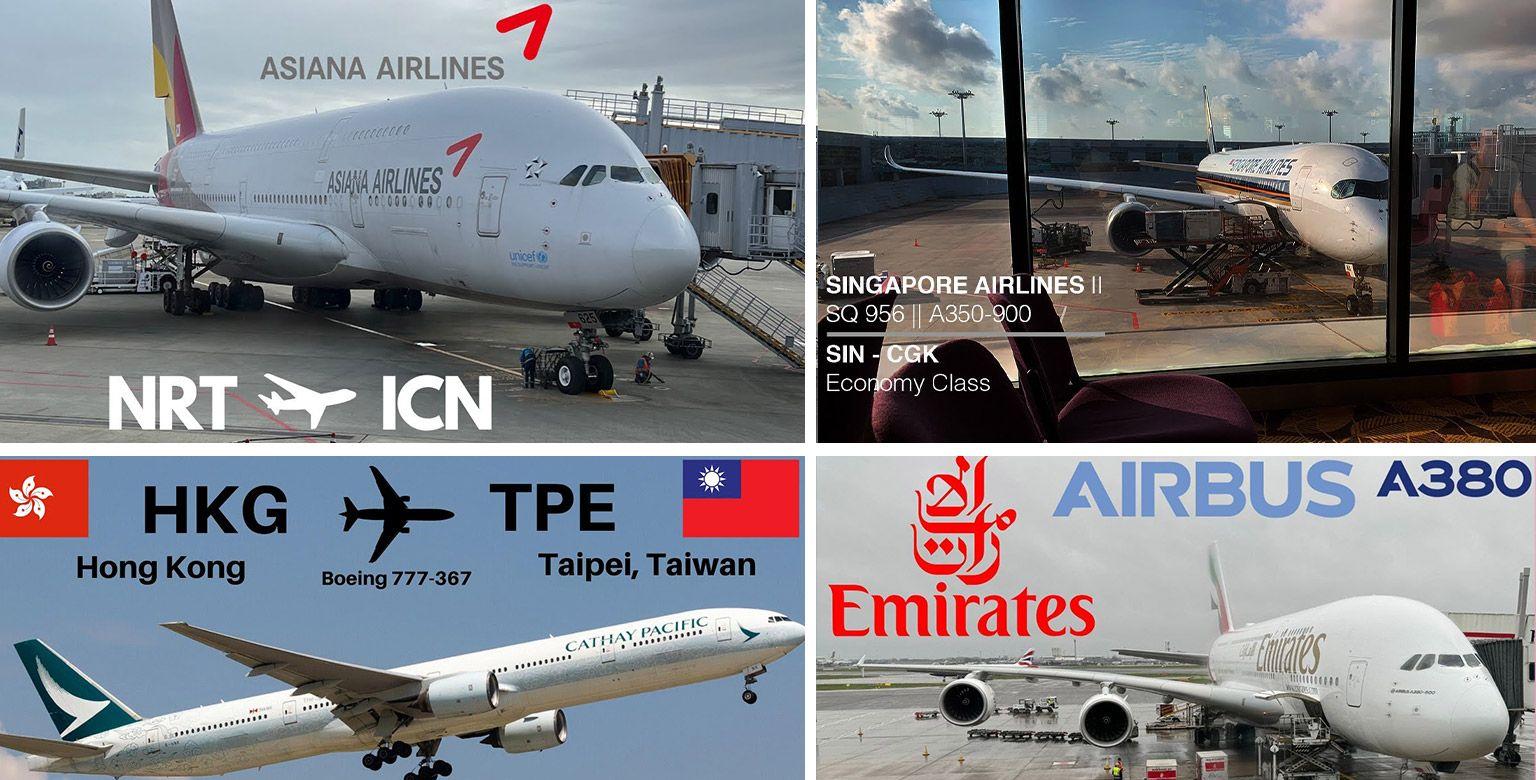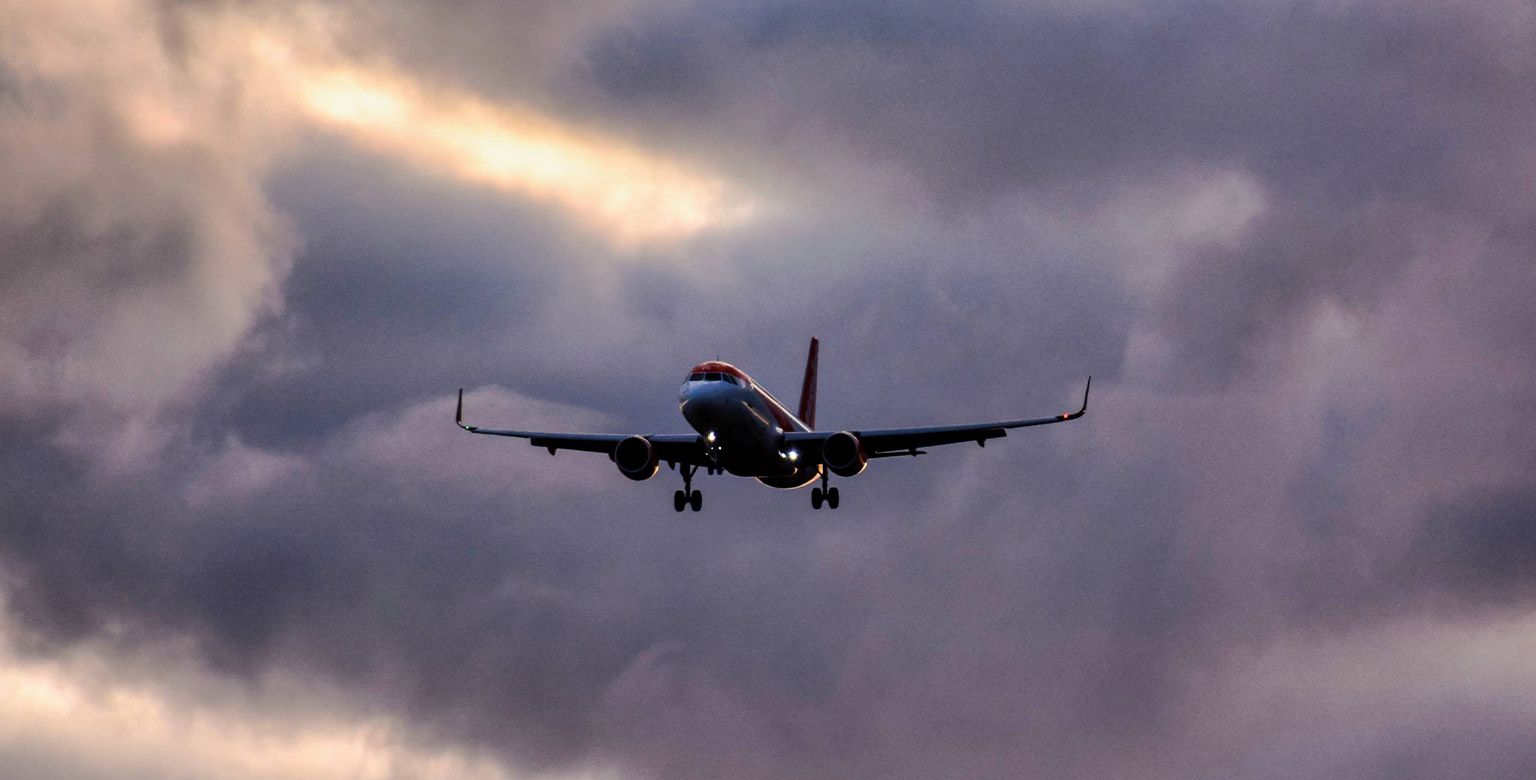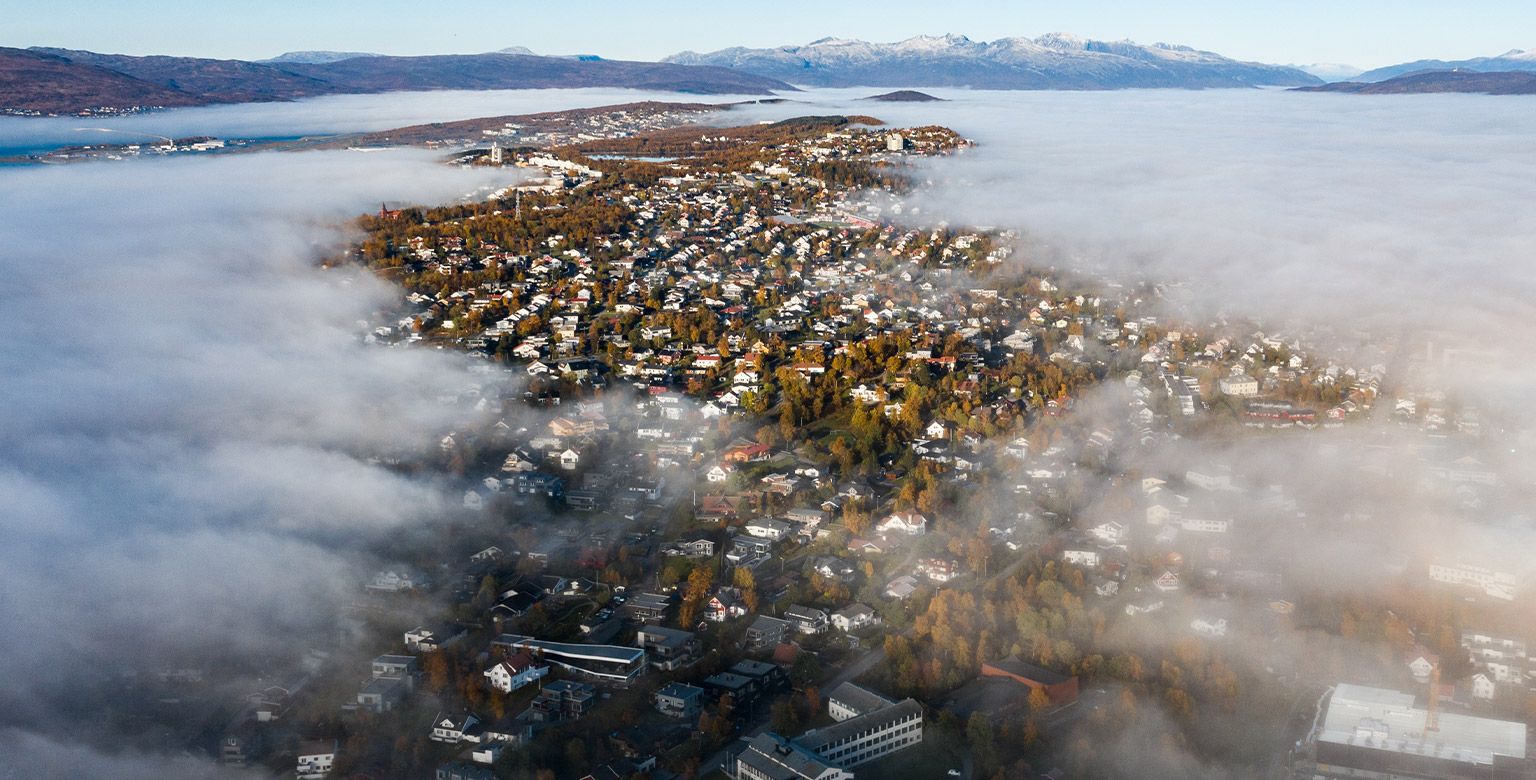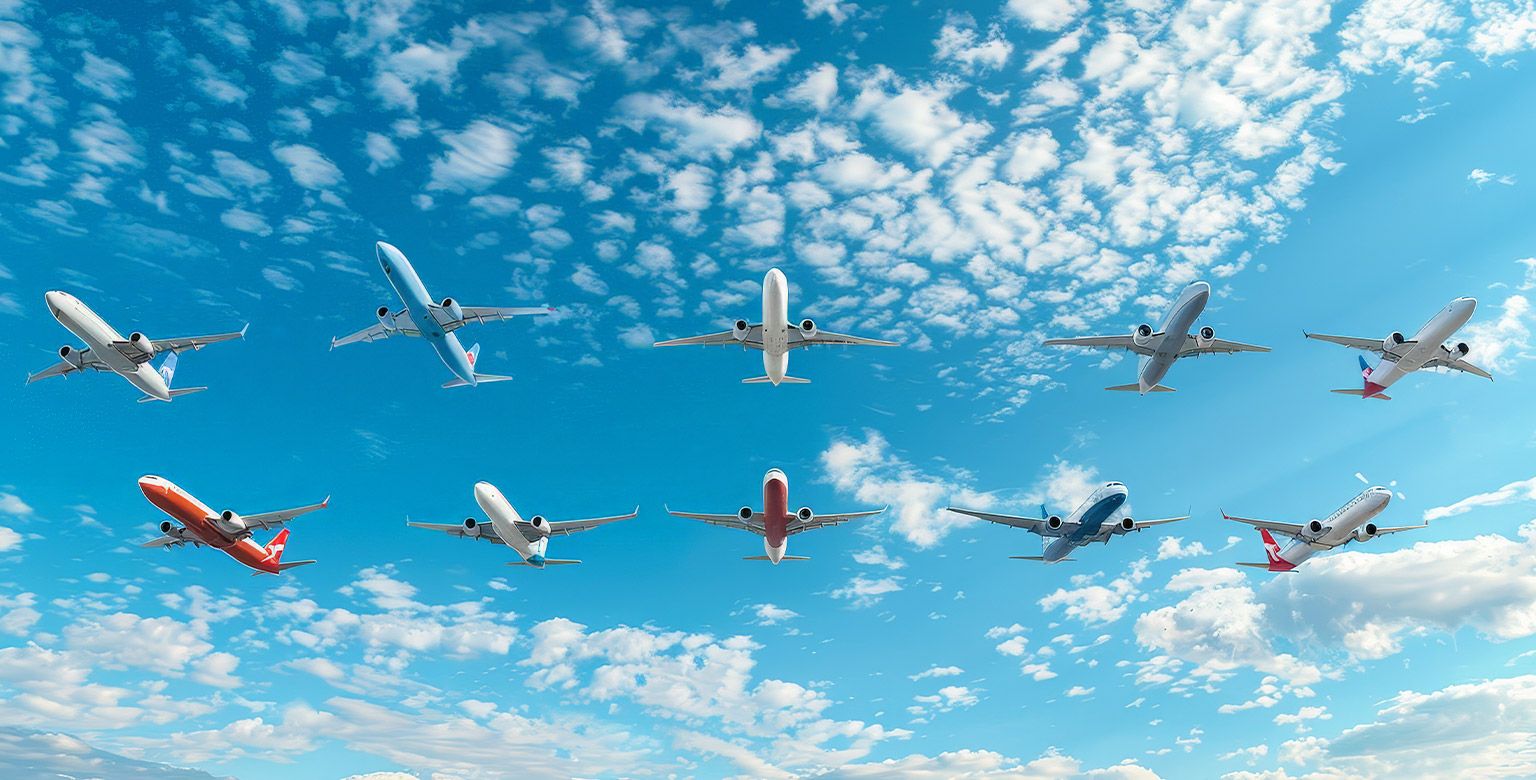worlds top 10 busiest flight routes

the world's busiest flight routes are dominated by Asian domestic connections, with Jeju-Seoul leading at 14.2 million passengers annually, followed by Japan's Sapporo-Tokyo (11.9 million) and Fukuoka-Tokyo (11.3 million), Vietnam's Hanoi-Ho Chi Minh City (10.6 million), and Australia's Sydney-Melbourne (9.2 million). The top international routes are led by Hong Kong-Taipei (6.8 million), Seoul-Tokyo (5.4 million), Dubai-London (4.9 million), New York-London (4.7 million), and Singapore-Jakarta (4.6 million). These routes thrive due to a combination of factors including strong tourism demand, business connections between major economic hubs, geographical convenience where alternative transportation is limited, cultural ties between regions, and intense airline competition that drives up passenger volumes through frequent flights and competitive
Ever wondered which flight paths are jam-packed with travelers year-round? Welcome to the world of busiest flight routes, where the skies are abuzz with millions of passengers chasing business deals, dream vacations, or just a quick hop across town. These high-traffic flight paths aren’t just about numbers—they’re a testament to how connected our world has become.
In an era when air travel influences global economies and cultures, these routes serve as lifelines, connecting business hubs, tourist hotspots, and regions where alternatives like rail or road simply can’t compete. From short domestic hops to sprawling international journeys, these flight paths are the heartbeat of global aviation.
Whether it’s the throngs of travelers commuting between Seoul and Jeju, the bustling skies over New York and London, or the scenic routes connecting Southeast Asia, these routes reveal fascinating stories about human mobility, economic growth, and cultural exchange.
But what exactly makes a route the busiest? And which corridors dominate the skies today? Let’s climb aboard and uncover the stories behind the world’s most crowded airways.

What Defines the Busiest Flight Routes?
When we talk about the busiest flight routes, we’re diving into a world where air travel thrives on numbers, demand, and strategy. But what exactly catapults a route into the global spotlight? Let’s break it down.
1. Passenger Volume: The Heart of the Metrics
The number of passengers traveling on a route is the ultimate marker of its popularity. Routes like Jeju–Seoul, with over 14 million annual passengers, illustrate how densely populated areas and travel habits significantly influence these numbers. It's not just about connecting two cities; it’s about connecting millions of lives.
2. Frequency of Flights
More flights per day mean greater accessibility. For example, the Jeju–Seoul route boasts upwards of 200 flights daily, cementing its place as a titan in the aviation network. High-frequency routes dominate the rankings for travel statistics because they cater to business professionals, tourists, and commuters alike.
3. Economic and Business Importance
Routes linking global financial hubs, such as New York–London or Mumbai–Delhi, thrive on a steady stream of corporate travelers. These global air travel trends are driven by markets and industries that operate 24/7, ensuring planes are always full.
4. Tourism Magnets
Who wouldn’t want to jet off to dreamy locations? Routes such as Tokyo–Sapporo or Hanoi–Ho Chi Minh City serve as bridges to popular tourist destinations, driving massive traffic volumes. These popular flight routes owe their success to the wanderlust they inspire.
5. Geographical and Connectivity Factors
Sometimes, the busiest routes are also the most practical. Short-haul flights between cities with limited transportation options (like trains or ferries) tend to dominate the numbers. This explains why regional routes in Asia lead the pack in travel statistics.
By focusing on these factors, the airline industry doesn’t just cater to demand—it builds infrastructure and strengthens aviation networks to meet the needs of a highly mobile global population. Whether for business, leisure, or necessity, these routes define modern air travel.
The Top 10 Busiest Domestic and International Flight Routes
The skies are alive with motion, and nothing illustrates this better than the busiest flight routes crisscrossing the globe. From short-haul domestic connections to high-profile international corridors, these routes define modern air travel and showcase the world’s insatiable need to stay connected.
Top 10 Busiest Domestic Flight Routes
1. Jeju (CJU) – Seoul (GMP)
- Passenger Volume (2024): 14.2 million
- Crowned the world’s busiest flight route, this short 450-km journey connects South Korea’s vibrant capital to its “Hawaii of the East,” Jeju Island. With over 200 daily flights, it’s a lifeline for leisure travelers and locals alike.
2. Sapporo (CTS) – Tokyo (HND)
- Passenger Volume: 11.9 million
- Japan’s snowy getaway meets its bustling metropolis. This route is a favorite among winter enthusiasts and business travelers, fueled by cultural ties and regional festivals.
3. Fukuoka (FUK) – Tokyo (HND)
- Passenger Volume: 11.3 million
- A business powerhouse, this route links Fukuoka’s industrial hub to the capital’s economic heartbeat. It’s a perfect example of a high-frequency aviation network in action.
4. Hanoi (HAN) – Ho Chi Minh City (SGN)
- Passenger Volume: 10.6 million
- The primary domestic artery in Vietnam connects the political capital, Hanoi, with its economic center, Ho Chi Minh City. It is a staple for both work and wanderlust.
5. Sydney (SYD) – Melbourne (MEL)
- Passenger Volume: 9.2 million
- Australia’s most iconic city duo, this route is packed with professionals, tourists, and families flying across the state lines
Top 10 Busiest International Flight Routes
1. Hong Kong (HKG) – Taipei (TPE)
- Passenger Volume: 6.8 million
- Bridging two major East Asian cities, this route thrives on its business, cultural exchange, and tourism mix. With a short 90-minute flight time, it’s immensely popular for quick getaways.
2. Seoul (ICN) – Tokyo (NRT)
- Passenger Volume: 5.4 million
- Linking the powerhouses of Korea and Japan, this route is a key player in both tourism and trade, thanks to its bustling capitals and cultural draws.
3. Dubai (DXB) – London (LHR)
- Passenger Volume: 4.9 million
- The Middle East meets Europe on this luxury-laden route. It’s a favorite for corporate travelers, tourists, and those chasing the allure of both cities.
4. New York (JFK) – London (LHR)
- Passenger Volume: 4.7 million
- Known as the “Atlantic Business Corridor,” this route connects two of the world’s biggest financial hubs. It's a symbol of global commerce, with plush transatlantic cabins to match.
5. Singapore (SIN) – Jakarta (CGK)
- Passenger Volume: 4.6 million
- This route, through the heart of Southeast Asia, is vital for economic ties, and its massive business traveler segment drives demand.
Why These Routes Matter
These popular flight routes move millions of passengers and serve as arteries of commerce, tourism, and cultural exchange. Whether it’s a leisurely trip to Jeju or a business meeting in London, these high-traffic flight paths embody the globalized world we live in.

Why Are Certain Routes So Popular?
Not all flight routes are created equal. Some routes stand out due to a perfect blend of demand, accessibility, and economic importance. Let’s dive into the reasons behind the enduring popularity of these busiest flight routes.
1. Tourism Magnets
Routes connecting major tourist hotspots naturally see high passenger numbers. Destinations like Jeju Island (South Korea), Sapporo (Japan), or Dubai (UAE) attract travelers year-round, fueling popular flight routes.
- Example: The Seoul–Jeju route thrives as South Koreans flock to Jeju’s beaches, volcanic landscapes, and cultural landmarks.
2. Economic and Business Hubs
The aviation network connects cities where business never sleeps. Flights like New York–London or Mumbai–Delhi are indispensable for professionals, making them go-to routes for corporate travel. These corridors are often packed with business-class passengers eager to close deals on both sides of the journey.
- Did you know? The New York–London route alone contributes billions of dollars annually to the airline industry.
3. Geographical Convenience
Air travel becomes the default choice in regions where alternative transportation options like high-speed rail are limited or non-existent. This is especially true for island nations like South Korea, where flights replace ferries for speed and comfort.
- Short-haul Stars: The Tokyo–Sapporo route stands out as a winter favorite, cutting an otherwise long journey into just a few hours.
4. Affordability and Airline Competition
Fierce airline competition on certain routes results in cheaper fares and higher passenger volumes. For instance, low-cost carriers dominate routes like Singapore–Jakarta, making air travel affordable for budget-conscious travelers. This drives up travel statistics as more people choose to fly.
5. Cultural and Historical Ties
Routes like Hong Kong–Taipei or Seoul–Tokyo thrive on strong cultural and historical connections between regions. These flights enable families, expatriates, and cultural enthusiasts to stay connected.

How Airlines Adapt to Sky-High Traffic
Managing the busiest flight routes isn’t just about flying more planes—it’s a complex dance of logistics, innovation, and customer satisfaction. Airlines operating on high-demand routes employ various strategies to ensure smooth operations and meet passenger expectations.
1. Increasing Flight Frequency
One of the most direct ways airlines manage sky-high traffic is by increasing the number of daily flights on popular routes. For instance, routes like Jeju–Seoul and New York–London have flights operating almost hourly to accommodate passenger demand. This ensures flexibility for travelers while optimizing the aviation network.
2. Deploying Larger Aircraft
When adding more flights isn’t feasible due to slot constraints or airspace congestion, airlines opt for larger aircraft. Wide-body jets like the Boeing 777 or Airbus A380 are often used on routes like Dubai–London to maximize capacity without adding more flights.
3. Enhancing Passenger Experience
Crowded routes demand exceptional service. Airlines differentiate themselves by offering:
- Premium Cabins: Spacious seats, gourmet meals, and luxury lounges cater to business travelers on New York–London routes.
- Budget Options: Low-cost carriers dominate routes like Singapore–Jakarta, focusing on affordability while maintaining efficiency.
4. Strategic Partnerships and Codeshares
Airlines often collaborate through codeshare agreements or alliances to manage high-traffic routes effectively. By pooling resources, they expand passenger options without overloading their own fleet.
- Example: Alliances like Oneworld and SkyTeam coordinate flights on busy international corridors.
5. Slot Management and Operational Efficiency
Airports like London Heathrow (LHR) and Tokyo Haneda (HND) operate under strict slot controls, serving high-demand routes. Airlines use advanced scheduling tools and AI to optimize arrival and departure times for seamless operations.
6. Environmental Innovations
With high traffic comes higher environmental scrutiny. Airlines increasingly turn to sustainable aviation fuel (SAF) and fuel-efficient aircraft to reduce their carbon footprint,
especially on routes like Seoul–Tokyo.
From advanced scheduling to cutting-edge aircraft, airlines adapt to the challenges of high-demand routes with creativity and precision. These efforts not only manage passenger volumes but also enhance the overall air travel experience while addressing environmental concerns.

The Environmental Impact of High-Traffic Routes
As the number of passengers continues to soar on the busiest flight routes, so does the environmental cost. High-demand routes, while essential for global connectivity, are under increasing scrutiny for their contribution to carbon emissions and climate change.
1. Carbon Emissions from Busy Routes
Airplanes are significant contributors to greenhouse gas emissions, with high-frequency routes amplifying the impact. Routes like Jeju–Seoul or New York–London, which sees hundreds of flights daily, generate substantial carbon footprints.
- Fact: Aviation accounts for nearly 2.5% of global CO₂ emissions, with short-haul routes disproportionately contributing due to take-off and landing cycles.
2. The Role of Sustainable Aviation Fuel (SAF)
To mitigate the environmental impact, airlines are increasingly adopting Sustainable Aviation Fuel (SAF), which can reduce lifecycle carbon emissions by up to 80%.
- Example: Airlines on routes like Singapore–Jakarta are piloting SAF to balance demand with sustainability goals.
3. Fuel-Efficient Aircraft
Modern aircraft, such as the Airbus A350 and Boeing 787 Dreamliner, are designed to consume less fuel while carrying more passengers. Airlines operating busy routes prioritize these models to improve fuel efficiency and reduce emissions.
4. Offsetting Programs
Some airlines offer carbon offset programs, where passengers can contribute to projects like reforestation to balance out the environmental impact of their flights. These programs are especially popular on high-profile routes like New York–London.
5. Airport Initiatives
Airports serving high-traffic routes are also playing their part. From electrifying ground operations to using renewable energy sources, major hubs like London Heathrow and Tokyo
Haneda are becoming more eco-friendly.
While the environmental impact of high-traffic routes is significant, the aviation industry is making strides to minimize its footprint. From cleaner fuels to cutting-edge aircraft, these measures reflect a commitment to sustainability without compromising the global demand for air travel.

Future Trends in High-Traffic Air Routes
The aviation industry is constantly evolving, and the future of the busiest flight routes promises exciting changes. With emerging markets, technological breakthroughs, and shifting travel preferences, the skies are gearing up for transformation.
1. Emerging Markets and New Hotspots
- As global economies shift, regions like Southeast Asia, Africa, and the Middle East are expected to see significant growth in air travel statistics.
- Example: Routes connecting Riyadh and Cairo, or cities in India like Bangalore and Hyderabad, are poised to join the ranks of the busiest flight paths.
- Emerging tourism destinations, driven by infrastructure improvements and accessibility, will create new flight demand.
2. Supersonic Travel Revival
- The return of supersonic jets, such as Boom Supersonic’s Overture, could revolutionize high-demand routes like New York–London. These jets aim to cut flight times in half, making business and leisure travel even more appealing.
- With this innovation, busy transatlantic routes may witness a resurgence of premium travelers.
3. AI and Data-Driven Route Optimization
- Artificial Intelligence (AI) is playing a growing role in optimizing flight schedules, reducing delays, and predicting demand spikes on high-traffic routes. Airlines can now allocate resources more efficiently, improving the passenger experience on routes like Singapore–Jakarta.
- AI-powered models also help airlines minimize fuel usage, aligning with sustainability goals.
4. Sustainability Driving Decisions
- As environmental consciousness grows, airlines explore alternative fuels, electrification, and hybrid models. These advancements will redefine the aviation network, particularly on short-haul and regional routes.
5. Shifts in Passenger Preferences
- Post-pandemic, passengers are leaning towards fewer but more meaningful trips, with preferences for direct flights. High-traffic routes connecting secondary cities could grow as travelers look beyond traditional hubs.
- Example: Routes like Munich–Dubai or San Francisco–Tokyo are emerging as alternatives to busier hubs.
The future of the busiest flight routes lies in striking a balance between innovation and sustainability. Emerging markets, supersonic travel, and AI-driven advancements will ensure that the world’s skies remain bustling yet efficient and eco-friendly.
Conclusion: A Global Love Affair with the Skies
From short-haul domestic hops to transcontinental corridors, the busiest flight routes are more than just bustling airways—they’re lifelines of global connection. These routes thrive on the interplay of tourism, business, and cultural exchange, each driven by unique factors such as passenger demand, geographical convenience, and airline competition.
As airlines continue to adapt with smarter scheduling, larger aircraft, and sustainability initiatives, these popular flight routes exemplify the industry’s resilience and ingenuity. Despite the environmental challenges posed by high-traffic routes, innovations like Sustainable Aviation Fuel (SAF) and fuel-efficient aircraft are paving the way for greener skies.
Looking to the future, emerging markets, AI-powered optimization, and even supersonic travel are poised to reshape the aviation network, creating new opportunities and enhancing passenger experiences. These advancements remind us that air travel is more than just transportation—it’s a powerful force that brings people and places together.
So, whether you’re jetting off to a vacation hotspot or sealing a business deal across the globe, these routes continue to embody the spirit of a connected and vibrant world.

Planingo
FAQ
